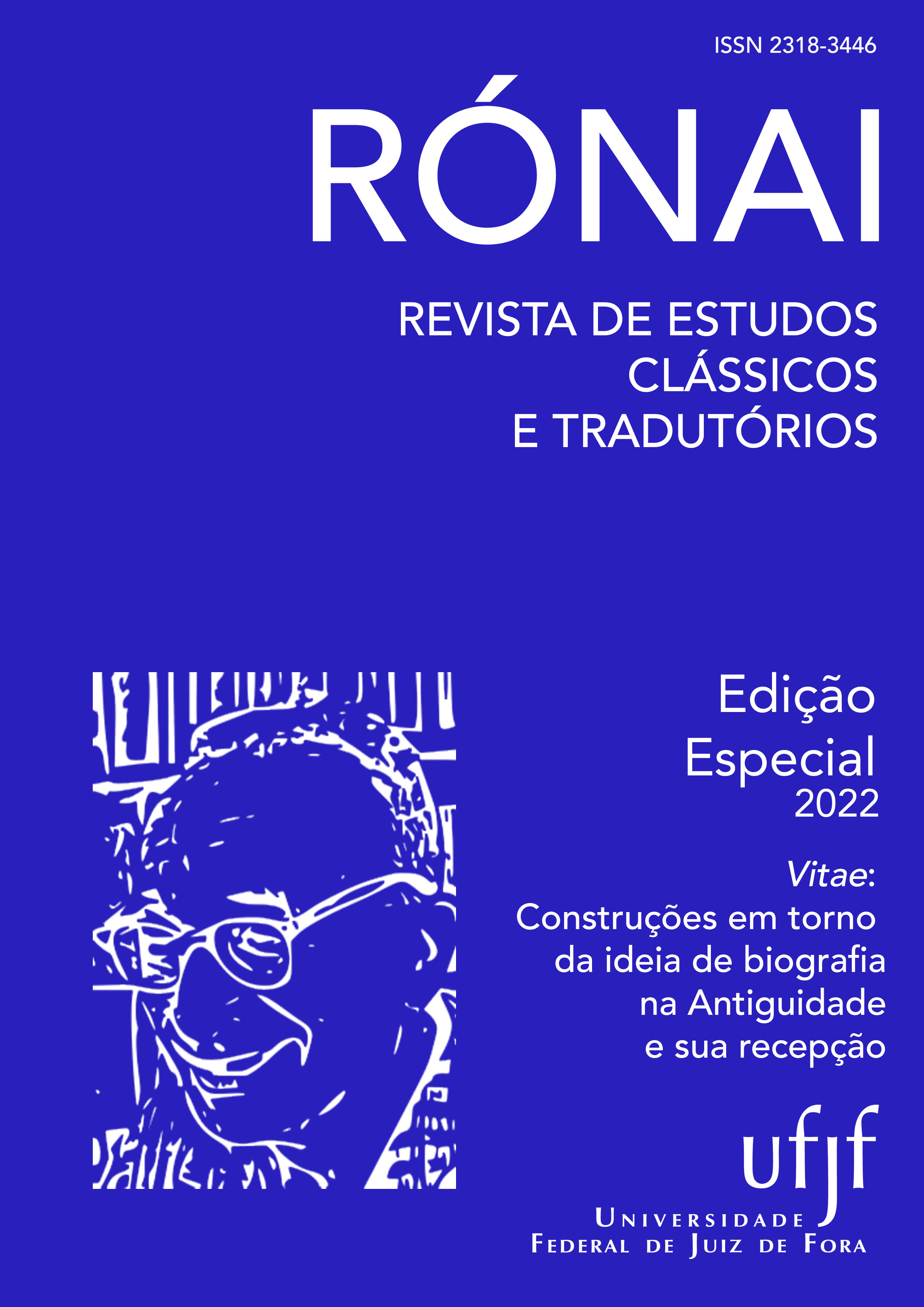What do we know about Nigidius Maius, the owner of the House of Dioscuri in Pompeii?
DOI:
https://doi.org/10.34019/2318-3446.2022.37883Palabras clave:
Pompeia, Nigídio, biografia, recepção, MedeiaResumen
The image of Medea depicted in the fresco of the House of Dioscuri shows us the resignification and uniqueness in reception, when compared with the imagery repertoire from the Greek world whose images represent the moment of the children's death. The wealthy host, who descended from the Nigidius Maius family, was supposed to receive his clients and important magistrates in large rooms or small private settings inside the residence for confidential discussions. The physical space performs the social functions of leisure and business, as the amici enjoy the banquet reclined in the large reception room located near to the garden and the peristyle. In the peristyle the most expressive and luxurious decorations were placed, strategically in a way that the visitor and spectator could see them, and, at the same time, the adornment expressed the common identity of its residents. We aim at analyzing the sociopolitical life of the Nigidius Maius family, owners of the House of Dioscuri in Pompeii.
Descargas
Citas
APPADURAI, Arjun (Org.). A Vida Social Das Coisas: As Mercadorias Sob Uma Perspectiva Cultural. Niterói: Editora da Universidade Federal Fluminense, 2008.
BALCH, David L.; LAMOREUX, Jason T. Finding a Woman's place. Princeton: Wipf and Stock Publishers, 2011.
BEARD, Mary. Pompeii: The Life of a Roman Town. London: Profile Books, 2008.
CAMPBELL, Virginia L. Politicians and Priestesses. Networks of Elite Families in Pompeii. Leidschrift. Historisch Tijdschrift, v. 31, n. 1, p. 61-74, 2016.
CHOAY, Françoise. A alegoria do patrimônio. São Paulo: Unesp, 2006.
COOLEY, Alison E.; COOLEY, M. G. L. Pompeii and Herculaneum: a sourcebook. London: Routledge, 2014.
FRANKLIN, James L. Cn. Alleius Nigidius Maius and the Amphitheatre: ‘Munera’ and a Distinguished Career at Ancient Pompeii. Historia: Zeitschrift Für Alte Geschichte, v. 46, n. 4, p. 434-47, 1997.
GARRAFFONI, Renata Senna. Rixa no anfiteatro de Pompéia: O relato de Tácito e os grafites parietais. História Revista. Goiânia: UFG, v. 12, n. 2, p. 241- 251, 2007.
GURD, Sean Alexander. Four Epigrams on Timomachus's Unfinished Medea. American Philological Association. The Johns Hopkins University Press, v. 137, n. 2, p. 305-331, Autumn 2007.
HARTNETT, Jeremy. The Roman Street: urban life and society in Pompeii, Herculaneum, and Rome. Cambridge: Cambridge University Press, 2017.
HOLLERAN, Claire. Shopping in Ancient Rome: The retail trade in the Late Republic and the Principate. Oxford: Oxford University Press, 2012.
LIU, Jinyu. Local Governments and Collegia: A New Appraisal of the Evidence. In: AUBERT, J-J. (ed.). A Tall Order – Writing the Social History of the Ancient World. Berlim: B. G. Teubner, 2008, p. 279 -310.
PIRSON, Felix. Rented accommodation at Pompeii: the evidence of the Insula Arriana Polliana VI 6. In: LAURENCE, Ray; WALLACE-HADRILL, Andrew. Domestic Space in the Roman world: Pompeii and Beyond. Dexter: Thomson-Shore, 1997, p.165-182.
RICHARDSON, L. Pompeii: The Casa dei Dioscuri and Its Painters. Michigan: University of Michigan Press, 1955.
TÁCITO. Anais. Trad. de J. L. Freire de Carvalho. Série Clássicos Jackson, Vol. XXV. São Paulo: Editora Brasileira, 1957.
Descargas
Publicado
Cómo citar
Número
Sección
Licencia
Derechos de autor 2022 Maria Regina Candido

Esta obra está bajo una licencia internacional Creative Commons Atribución 4.0.
Derechos de autor
Los autores que publican en esta revista aceptan los siguientes términos:
1. Los autores y las autoras conservan los derechos de autor y le otorgan a la revista el derecho a la primera publicación, que está bajo la licencia Creative Commons Attribution License 4.0 Internacional.
2. Los autores y las autoras pueden publicar y compartir el trabajo con reconocimiento de la publicación inicial en esta revista.
3. Los autores y las autoras de las obras aprobadas autorizan a la revista a asignar el contenido de sus obras, después de la publicación, para su reproducción en indexadores de contenido, bibliotecas virtuales y similares.
Para obtener más información sobre Creative Commons Attribution License 4.0 Internacional, acceda a: https://creativecommons.org/licenses/by/4.0/deed.es
Exención editorial
El contenido de los artículos publicados es responsabilidad única y exclusiva de sus autores, y no representa la posición oficial de Rónai - Revista de Estudos Clássicos e Tradutórios o de la Faculdade de Letras de la Universidad Federal de Juiz de Fora o instituciones asociadas.



